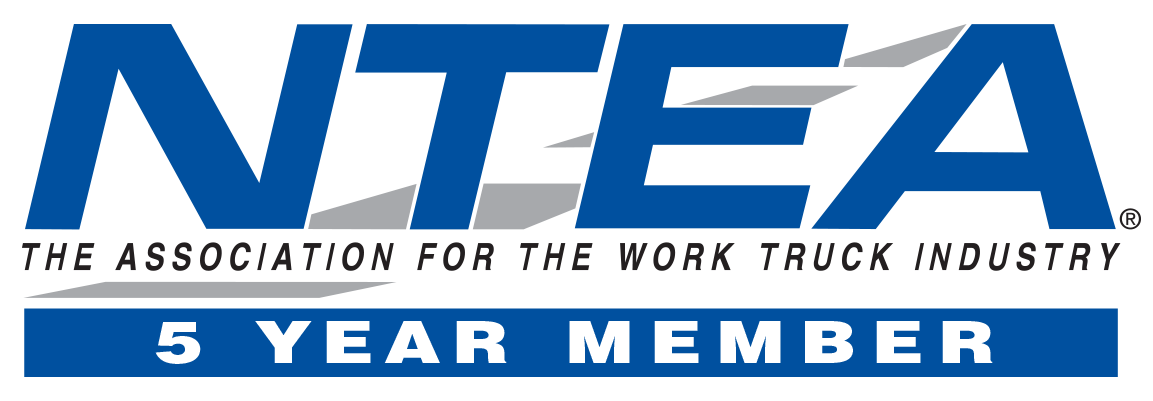1. How does solar energy work with my lawn equipment?
Solar cells convert the sun’s energy into Direct Current (DC power) to charge auxiliary batteries. Solar cells on the roof of the Super Lawn Truck acts as a battery charger working anytime the sun is out, regardless of what season it is. The energy captured from solar panels is used to charge the batteries for lawn equipment. Solar energy is FREE. Capturing solar energy is quiet. Capturing solar energy is the way to move your lawn maintenance business away from using smelly gasoline. A well-designed solar charging system can last 20 plus years with very little ongoing maintenance.
2. What is the difference between DC and AC power?
Solar cells capture energy from the sun and create direct current used to charge a battery system or provide power to an electrical circuit. DC (direct current) power is drawn from a battery and will run several types of power tools, like trimmers and mowers. AC (alternating current), which is drawn out of the wall at home, is replicated in the Solar Lawn Truck by using an inverter to convert your DC battery power into AC household power. This is important if you wish to run AC-powered devices such as battery chargers rated for AC power. AC power is used to charge the lithium-ion batteries used in lawn equipment like string trimmers, lawn mowers, and blowers.
3. What is the difference between a pure sine wave and a modified sine wave inverter?
All AC devices are made to run off of pure sine wave power. Modified sine wave is a version of AC power that is trying to replicate AC power, but does not achieve an exact replica of it. Modified sine wave inverters are much less expensive than pure sine wave inverters. However, many sensitive electronic devices require the exact replica of AC power that a pure sine wave inverter produces. Examples of devices running poorly on modified sine wave include portable tool chargers, high-end TVs and stereos, CPAP machines, and microwaves. Lithium-ion batteries require pure sine wave electricity for long life. SLT only uses pure sine wave inverters in our Mobile Solar Charging Station. Lithium-ion batteries are expensive. You would be making a POOR decision to attempt to charge lithium-ion batteries with a modified sine wave power inverter.
4. What is the difference between amps, watts and volts?
A gas station is a great analogy to use when talking about Watts, Amps and Volts. Amps are like gallons of gas that fill your battery and Volts can be compared to the pressure at the gas pump – you require a certain volt “pressure” to fill your battery “gas tank.” Watts are simply the amps multiplied by the volts.
5. What is the difference between a solar kit and a mobile solar system?
Low-cost solar kits contain a solar panel, solar controller, and cables, and are ideal for simply charging one auxiliary battery. Rarely would a small portable solar kit provide the quantity of re-charging solar power you would need to provide commercial lawn maintenance services. The Mobile Solar Charging Station by Super Lawn Truck includes more accessories such as a large solar array, power inverter, transfer switch, battery charger, fuse block and electrical distribution panels, which will allow you to run AC appliances/electronics, charge your batteries, and connect both shore and solar power to your AC accessory breaker panel. This is a robust mobile charging system designed to help you power your tools all day long. The mobile solar-powered charging station is built onto the roof of the truck with battery storage installed under the truck and electrical distribution carefully assembled inside of the enclosed truck body to protect electrical equipment from the weather.
6. Why do I need a solar controller/regulator?
The solar controller prevents the solar panel from overcharging your batteries. A significant part of the investment in a solar charging system will include battery storage. Proper management of batteries can extend battery life for years, lowering the costs of ownership for your mobile solar charging station by Super Lawn Trucks.
7. Do I need to install an inverter if I only want to charge my auxiliary battery with a solar panel?
No, you only require an inverter if you need to convert DC battery power to AC household power to run devices like TVs, battery chargers, and microwaves. For example, you may be able to use a solar panel to charge a 12-volt automotive battery. However, all battery chargers for lithium-ion batteries are AC power. So, if your goal is to charge lithium-ion batteries using the manufacturer’s charger, you will need a power inverter. The Solar Lawn Truck system is equipped with a robust, pure sine wave power inverter to maximize battery and charger life and give you the ability to charge multiple lithium-ion batteries while you travel between your lawn maintenance jobs.
8. How long can I run my equipment on solar power?
This all depends on how many amps your load consumes per hour and how large your battery bank is. Super Lawn Truck has engineered the Generation 1 Mobile Solar Charging Station is to provide enough power to run a 3-man crew an 8-hour work day using hand-held power tools. The Generation 2 Mobile Solar Charging Station is designed to provide additional power generation enabling charging of battery powered zero turn lawn mowers while parked inside the Super Lawn Truck. If you would like to learn more about the robust and reliable charging system being used by professional lawn maintenance crews across the USA, we invite you to watch or listen to the case study titled: Enhancing Revenue and Controlling Cost with Battery Powered Equipment
9. Will solar work in the winter in my state or province?
Solar cells will work anytime it is light out and sunlight is shining on the panel. If there is an accumulation of snow or dust on the panel, it will not work. We recommend monthly (using soapy water and soft brush) washing of the solar array to maximize energy generation. We recommend you park your truck in a sunny location to maximize solar power generation. You can look at the display monitor on the solar controller inside your Solar Lawn Truck to confirm solar power is being generated. You can count on the mobile solar charging station by Super Lawn Trucks to provide you with FREE solar energy year round. However, you will generate LESS power in the winter months when the days are shorter and the angle of the sun is lower in the southern sky. During the summer months when the days are longer and the sun is higher in the sky, your system will generate much more energy. The beautiful part of this solar system is that you tend to need more power in the summer and less in the winter when providing lawn maintenance services. Generally speaking, a solar system located in Canada will generate less solar energy than one located in Texas, but solar energy is everywhere the sun shines.
10. Do I have to penetrate the roof of my truck to install a solar panel system?
There are many ways to install solar panels on the roof of a truck. Our preferred method of mounting solar panels will not penetrate the roof of your truck or truck body. Solar panels can be attached to the roof of the Super Lawn Truck enclosed body via industrial adhesives for a lifetime of reliable use. The installation of flexible solar panels onto a truck or truck body neatly follow the contour of the roofline and are hardly even noticed unless you are looking down at the truck from above. The installation of solar panels onto the roof of the Super Lawn Truck add less than 1 inch to the overall height of the truck body.
11. How many lawn equipment batteries will the Super Mobile Charging Station be able to recharge in an 8-hour shift?
This depends on the size of batteries you will recharge. For example, you can recharge (10) 2.5Ah and (5) 5.0Ah batteries for use during the day. Best practices will require the operator to recharge (plug in your Mobile Solar Charging Station overnight) all batteries overnight using grid power.
12. Who is the target customer for the new Greenworks commercial line?
The Greenworks Commercial tools are designed for landscaping professionals who count on their equipment to earn a living. Whether these professionals are working in residential, industrial or institutional environments, these tools afford greater efficiency, productivity and cost savings.
13. What makes the Greenworks commercial line especially well-suited for professional landscapers?
Greenworks Commercial tools are powered by best-in-class 82-volt battery technology that delivers power and run-time equivalent to comparable gas-powered models. These professional-grade tools utilize brushless, electric motors that deliver all the necessary power and performance to get the job done, while also reducing noise and vibration, and completely eliminating emissions.
14. Do Greenworks products come with a warranty?
Yes, all Greenworks Commercial tools come with a 2-year tool and 2-year battery warranty.
15. Where can landscaping professionals buy Greenworks commercial tools?
Greenworks tools can be found online at: http://greenworkscommercial.com or you can search for independent dealers at: https://commercial.greenworkstools.com/tools/locations
16. Are battery-powered tools powerful enough for professional landscapers who are accustomed to gas-powered tools?
Extensive field-testing has demonstrated that Greenworks Commercial tools have all the necessary power and performance to get the job done.
17. How do landscape professionals handle the recharging of batteries? Is re-charging batteries easy?
Battery management is simple and efficient with Greenworks Commercial tools and the Mobile Solar Charging Station by Super Lawn Trucks. Not only do the 82-volt battery systems provide long run times, but also they recharge quickly: a 40-minute charge per 2.5Ah. This “rapid charge” equates to about 5-cents ($0.05) per charge or about $4.00/year per battery. Greenworks also offers a backpack battery that compactly provides the equivalent power and run-time of (5) 2.5Ah batteries for extended use. Landscaping professionals find that battery management is easy and cost-effective.
18. Are Greenworks batteries safe?
Yes, our customers continue to embrace our 82-volt battery technology and value the extensive testing and certifications that we have in place to ensure the safety and performance of our products.
19. Will the solar panels fully recharge my battery bank each day?
The solar panels are installed to assist in recharging your battery bank when the sunlight hits them while you are parked or traveling down the road. We recommend daily re-charging overnight using grid power will be required for commercial operators using commercial hand-held power equipment.
20. How long will it take to recharge a depleted battery bank on the Super Mobile Solar Powered Charging System?
The system is designed to be recharged overnight using grid power for best results. The recharge time will depend on how many batteries you have charging at once. At minimum, it will take 5-8 hours of recharge time per full day of use.
21. What maintenance is required for the Super Mobile Solar Powered Charging System?
You will need to re-charge the battery bank using grid power on a daily basis. The built-in battery charger simply plugs into a 120-volt household receptacle. You must keep the electrical components clean for easy air flow during charging operations. Maintenance free battery life is determined by the amount of charges you use each year.
22. How much does the Mobile Solar Charging Station cost?
Payback for this system on display at the Green Industry Expo event, Oct 2017, is 2 to 4 years. Estimates indicate a contractor will reduce their annual gasoline bill by $2000 to $2500 per year per 3-man crew. Current tax policy allows for 30% of the costs of the solar system to be claimed as a tax credit.
Cost analysis:
Retail Cost of Super Mobile Solar Powered Charging System: $9995
Less 30% solar energy tax credit: $2999
Less 3 years gasoline spend reduction: $6000
Your actual cost of system: $996
Listed as of 2018, prices subject to change.
Copyright©2023 Super Lawn Technologies







